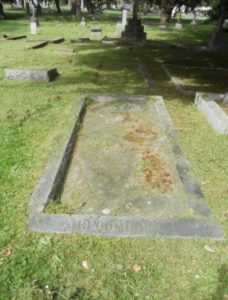In the midst of the 1918 Influenza epidemic and World War One, another big marine disaster occurred in the cold waters of the Lynn Canal.
Capt. Charles John Bloomquist was a passenger on the night of the grounding of the Sophia. The story of the Princess Sophia loss on October 24, 1918 in a blinding snowstorm, has been well documented, with a number of White Pass employees onboard heading back to Victoria for the end of the season. One report in the Daily Colonist on November 3, 1918, stated that only 2 of the victims drowned, the rest suffocated in the crude oil spilling from the ship.
I was curious to know a bit more about the Swedish Captain Bloomquist. He was born in 1867 in Stockholm, Sweden and came to Canada in 1883. He lived with his wife, Catherine at Shawnigan Lake, a small farming community 28 miles north of Victoria. He was listed there in the 1909 directory of Vancouver Island, also he kept a room at the Dominion Hotel in Victoria. He left behind 4 sisters but no children.
He had worked for 20 years on the boats in the Yukon. He was the master of the White Pass Steamboat Dawson. Before that he had worked for the Canadian Government on the Quadra and the Sir James Douglas.
The Princess Alice brought many of the bodies back to Victoria on the 12 of November 1918. On November 15 he was buried in Victoria with the Victoria Columbia Masonic Lodge as pallbearers. Rev. F.A.B. Chadwick gave the service. Catherine is buried with him at the Ross Bay Cemetery, she died November 27, 1969 at the age of 92! Here is a picture that Anne Scott made of the grave in Victoria! Posted on Find A Grave for this story – Thank you so Much Anne!!!
from the Daily Colonist October 29, 1918







